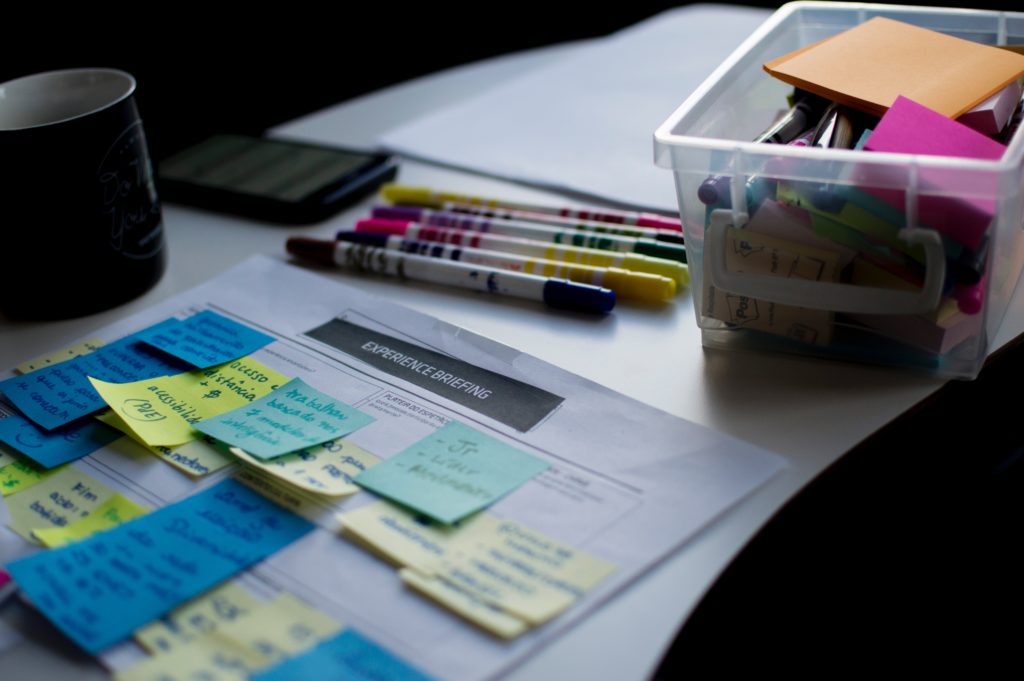The majority of the success you can achieve in your professional career won’t happen by accident. It also won’t be a result of dumb luck or circumstances. Instead, you will probably find that the professional situation you’re in will be largely a result of your decisions over the years.
But unfortunately, many professionals fail to take a structured approach to planning out their careers, relying on intuition and circumstances. And that doesn’t always get them where they truly wanted to go.
And that’s why developing a professional development plan can be so vital to career success.
When you map out every part of your career and set clear goals, you can begin making conscious action towards achieving those goals. It also enables you to set the right priorities and make compromises where necessary.
In this article, let’s explore what a professional development plan is, why it matters, and how you can create one for yourself.
Ready to get started? Then read on below.
What is a Professional Development Plan?
The very term professional development plan is pretty good at communicating the core idea behind the process. It’s a way for professionals seeking to advance their careers to map out the entire process, crystalize career goals, and figure out what needs to be done to get there.
Instead of relying on circumstances, you can gain deeper insights into what it takes to succeed in your industry and excel as a professional. Whether it’s certifications, mentorships, experience, or other types of credentials, you can determine what stands between you and your career goals and pursue those things with more focus than would otherwise be possible.
Being deliberate about your career goals can also help you identify the types of opportunities you want to pursue. When you know that a specific type of opportunity would benefit you long term, you might be more willing to sacrifice short-term benefits for the growth potential you could achieve over time.
And since a professional development plan depends on your goal, you can continually update it accordingly as you discover more about your field and what you want to do. Having that clear roadmap at every step of the journey is an invaluable resource for any professional who wants to think about their career more methodically.
Why Should You Create One?
Putting together a professional development plan might not sound too exciting at first. But even though the process does require effort, it can be incredibly rewarding as well. You get to map out a journey you want to take as a professional in your field, and the sense of direction alone can be a huge motivating factor that propels you forward.
To really drive home the need to develop a professional development plan, let’s look at a few key ways it will benefit you both in the short-term and long-term future.
Have Structure
Having structure as you progress your career is essential. Without it, it’s easy to get distracted by different possibilities and end up in a position that does not satisfy you. When you have a professional development plan, you can always maintain structure in your career and take a broader approach to how you move forward.
Maintain Direction
Maintaining focus and direction throughout your career isn’t easy. But a professional development plan can help you make the right choice in any situation, as you can use it to weigh your options against the things you want to achieve.
Lay Out an Action Plan

If you want to be proactive about where your career goes, you must be able to take action consistently. But taking action requires a plan, at least if you want that action to result in positive outcomes. A plan will provide you with specific goals you need to accomplish at any given moment, which will make it easier to get the most of the time you have available.
Identify Opportunities
If you’re going to identify the best opportunities for career development, you need to be aware of what you want to achieve. With a professional development plan, you will always have a reference for your goals and won’t miss key opportunities that come your way. For instance, you may discover that a business coach might be worth the investment if you know you can gain insights about what to do next.
Track Progress
Finally, a professional development plan will serve as a way to track essential milestones in your career. As you achieve the goals you set out, you will see yourself getting closer to fulfilling your career trajectory, and that will allow you to track progress and make adjustments accordingly.
What Are the Stages of Professional Development?
A comprehensive professional development plan can be broken down into a few key stages. These stages represent a typical progression professionals go through as they advance through their careers. And understanding them can help you develop a plan that considers the possible hurdles and milestones you will need to go through.
Let’s go over these steps below.
- Assessing the Situation. Before you begin work on advancing your career, you must first identify what career you want to pursue in the first place. And for most people, that means evaluating their skills, interests, talents, past experiences, and life goals. Only then can you start narrowing down the specific careers or professional opportunities you should and could pursue.
- Investigating Your Options. Once you have a more general idea of the available options, you can build on that by talking with professionals in that field and learning as much as possible about what it would take to succeed.
- Preparing to Become a Professional. At this point, you should be ready to start preparing with a more focused plan of action. You can even begin setting specific goals and figuring out what it will take to become a professional in the field you want to pursue.
- Commiting to a Plan. As you progress through your goals, you will usually have to commit to specific work opportunities and gain the necessary experiences to grow professionally and move forward.
- Breaking Through. As you gain more experience and start excelling in your field, you will begin developing a presence as a thought leader and a sought-after expert capable of handling even the most complex projects and situations. In the How We Solve podcast, David Dulani shares his process for becoming a thought leader in any space and keeping up with the industry’s development.
- Identifying Next Steps. As you reach a point where your current career trajectory can’t rise anymore, you can start reevaluating your career goals from a broader perspective and looking at what the next phase of your career could look like.
Depending on where you are in your professional life, you may find yourself in any of the above stages of a professional development plan. But understanding how each step relates to the others and why it matters will help you see the bigger picture of your situation and be more deliberate about the choices you make.
How to Create a Professional Development Plan?

At this point, you should have a pretty solid understanding of what goes into an effective professional development plan. But the specific process for developing it might not be entirely clear.
To help with that, let’s look at a few key steps that you should go through.
Identify Your Role
If you already work at a company, the first step you’ll need to go through is identifying your current role and figuring out how it plays into your overall professional development plan.
If you’re already in a position you enjoy and want to grow from, that’s a great starting point. But if you find that you want to end up in a different field or at least a different specialization, you will need to consider how you can leverage your current experiences to transition into the areas of work that are more appealing and more aligned with your goals.
Assess the Skills You Have
Before you can move into a new field or start mapping out your journey towards your career goals, you must have a clear understanding of what you can do right now and how you can build on those skills in the future.
To do that, make a list of all your current skills and what value you can add as a professional in your field. Also, consider your weak areas or things that you are less knowledgeable about. Then, you can come up with a plan to round out your skills and knowledge so that you can move forward as a professional and specialize in an area that interests you the most.
Write Down Goals
Once you know where you are right now, you can start looking at the future and setting specific goals about how your career should look like. Without the previous two steps, this step can be a little generic. Still, if you identify what you already know and what you can improve, the goals can be very actionable, specific, and valuable for where you want to be.
Make sure you list both goals that are more immediate, such as skills or certifications you should pursue, as well as goals that stretch out through the months, years, and even decades.
Put Together a Plan
At this point, you should have a list of goals with various timelines and urgency levels. Now it’s time to put those goals into an actionable plan that will get you moving in the right direction.
You won’t be able to achieve everything at once, so you need to use the available time wisely and prioritize your focus according to what you need to address the fastest. If you feel you’re missing a critical skill that would allow you to become better, that’s an excellent place to start, as that can allow you to pursue better opportunities and provide a broader range of experiences you are seeking.
To achieve the goals you set out and go through the plan effectively, you should implement an effective scheduling process. Many professionals find a block schedule to be an excellent way to fit in work responsibilities with activities that help advance the career.
Track Progress
Even if you put together the most detailed and insightful plan you can right now, there’s little chance that it will remain unchanged for the duration of your timeline. In fact, as you move forward, you will also learn more about yourself and what you want to pursue, which will open up even more opportunities to expand your professional development plan and really zero in on your priorities.
To make sure that’s the case, regularly review your plan and think about how you could improve it. Over the months and years that go by, you may find that it takes on a completely different shape, as you may discover that the initial direction doesn’t line up with what you want any longer.
Bottom Line
Creating a professional development plan can be one of the best decisions you make. It can help crystallize goals, figure out the direction you should take, and provide you with clarity of what to focus on right now.
Have you found a professional development plan helpful in advancing your career? If so, how? Share your experiences in the comments below!




